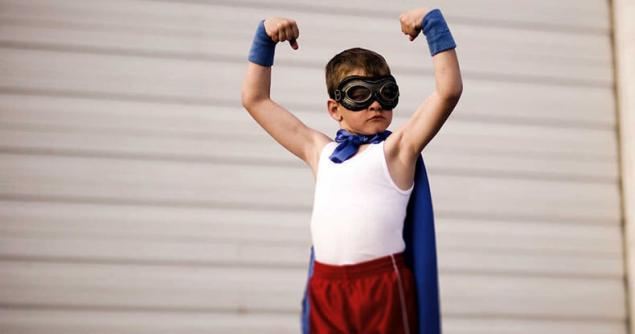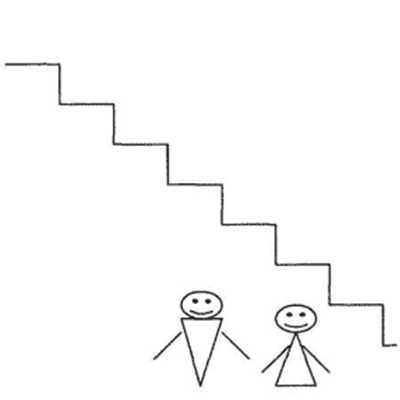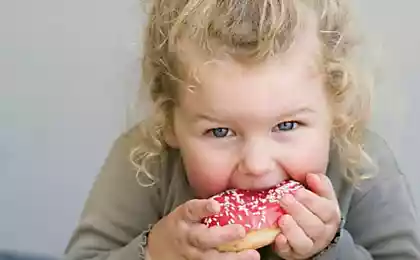266
A simple Lesenka test: Check your child’s self-esteem
Each person constantly compares himself with other people and on the basis of this comparison forms an opinion about himself: his human qualities, character traits, capabilities and abilities. So gradually formed self-esteem, which begins to develop in early childhood. The relationship between parents and children has a very big impact on the self-esteem of the child.
For a child with an adequate assessment, such features as sociability, desire to contact, activity, resourcefulness, sense of humor are characteristic.

Children with low self-esteem are characterized by resentment and increased vulnerability, passivity and suspicion. Fear of being worse than others is the reason they often refuse to participate in other children’s games, and if they do, they are often offended.
Children with high self-esteem tend to be better than others. They are often aggressive with other children. I am the strongest (beautiful, the best). You have to listen to me, do what I want.
Of course, these descriptions are very brief, but maybe someone already recognized their child?
Self-esteem has an impact on the fate of a person, on how his relationships with others will be built in adulthood. Lowered self-esteem is the fertile ground on which many psychological complexes will bloom in a lush color – the inferiority complex, the “ugly duckling” complex, the “victim” complex and others.
If you want to know what your child’s self-esteem is, it will help.
Lesenka Test (Ten Steps Test)

This test can be used from the age of three.
You need to draw a ladder of 10 steps on a piece of paper, show the child and explain that on the very first, lower step there are the most bad children (evil, greedy, etc.), on the second - better children, on the third step - even better, and so on. On the tenth, the highest step, there are children who are the most... who ALWAYS do the best.
It is very important that the child understands everything correctly, so it is advisable to ask him after explaining what he understood. Then ask which step he will put himself or the doll on (because the child identifies with the doll).
9 principles of noble education, which are relevant in the XXI century
Happiness is a side effect of ordinary life
If the child puts himself on the 1st, 2nd or 3rd lower stepsHe's underestimated.
Four to seven. Self-esteem is adequate, normal.
Eight to ten. - self-esteem is high.
However, for the youngest preschoolers, self-esteem is considered overestimated if the child puts himself on the top step every time he tests. published
Source: v-garmonii-s-soboi.ru/wzaimootnoshenija/samootsenka-rebenka-1
For a child with an adequate assessment, such features as sociability, desire to contact, activity, resourcefulness, sense of humor are characteristic.

Children with low self-esteem are characterized by resentment and increased vulnerability, passivity and suspicion. Fear of being worse than others is the reason they often refuse to participate in other children’s games, and if they do, they are often offended.
Children with high self-esteem tend to be better than others. They are often aggressive with other children. I am the strongest (beautiful, the best). You have to listen to me, do what I want.
Of course, these descriptions are very brief, but maybe someone already recognized their child?
Self-esteem has an impact on the fate of a person, on how his relationships with others will be built in adulthood. Lowered self-esteem is the fertile ground on which many psychological complexes will bloom in a lush color – the inferiority complex, the “ugly duckling” complex, the “victim” complex and others.
If you want to know what your child’s self-esteem is, it will help.
Lesenka Test (Ten Steps Test)

This test can be used from the age of three.
You need to draw a ladder of 10 steps on a piece of paper, show the child and explain that on the very first, lower step there are the most bad children (evil, greedy, etc.), on the second - better children, on the third step - even better, and so on. On the tenth, the highest step, there are children who are the most... who ALWAYS do the best.
It is very important that the child understands everything correctly, so it is advisable to ask him after explaining what he understood. Then ask which step he will put himself or the doll on (because the child identifies with the doll).
9 principles of noble education, which are relevant in the XXI century
Happiness is a side effect of ordinary life
If the child puts himself on the 1st, 2nd or 3rd lower stepsHe's underestimated.
Four to seven. Self-esteem is adequate, normal.
Eight to ten. - self-esteem is high.
However, for the youngest preschoolers, self-esteem is considered overestimated if the child puts himself on the top step every time he tests. published
Source: v-garmonii-s-soboi.ru/wzaimootnoshenija/samootsenka-rebenka-1























